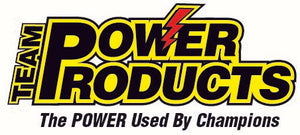Let's review some of the safety issues and tuning advice when using modern, high power sensored and brushless motors used in our RC cars, and specifically Team Power Products motor line. In other blog topics here, there are videos on assembly/disassembly and how to lubricate, among many other topics. Click HERE for the entire listing...
On all of your motors, general maintenance is a big plus for motor longevity. Add 1/2 Drop of light oil to both bearings every 10 race days. Make sure all the screws are tight while you have the motor out to oil.
Remember: Always use a contactless temp gun when you change gearing, timing or you are on a track for the first time! Harbor Freight and models made by DeWalt work well.
For R5-R6 Details and Tuning: Click HERE!
For R7 Details and Tuning: Click HERE!
For Talon Details and Tuning: Click HERE!
These motors produce a lot of power, especially when used with modern LiPo packs. All Team Power Products 540 sized motors are designed to be used with 2S LiPo packs. DO NOT use more than 2S packs (the small wind motors such as 25.5t and 21.5t typically use 1S LiPo packs) on 540 sized motors (such as theR5, r6, R7 & Talon line)! The eighth scale motors (42mm diameter) may use 3S and 4S packs, depending on KV rating. Message for details.
Keep loose clothing and metal jewelry away from the motors. If plugged into a LiPo pack, you may short across the exposed motor terminals causing motor, ESC, and personal damage! Or if the motor starts spinning, the gears may 'grab' anything loose and pull you into it!
Make sure the motor attachment screws to the motor plate are TIGHT after adjusting gear clearance (pinion to spur). Use washers under the heads of the screws securing motor to motor plate for consistent gear mesh. If you are new to the hobby, have a local, experienced person show you how! There are several motor attachment screw locations. If you strip a hole, use next available hole location by rotating motor.
ALWAYS keep your car off its tires on your work bench when you are preparing or repairing your car. You may inadvertently energize the motor, and if the wheels/tires are touching the bench (or you), it will take off with potentially damaging results and injuries.
All Team Power Products motors come with timing set for NORMAL rotation and wired A-A, B-B, C-C from the ESC. See my other blogs about how to set your motor for reverse rotation to prevent motor and ESC damage.
All Team Power Products motors have timing set for best performance on the average track. Gearing choice is very important for best performance and good motor life. ALWAYS use a temp gun to measure the motor temperature after a short test run prior to a race, especially when changing gear ratio. Do not allow motor to exceed 160 degrees Fahrenheit at any time for best life. Click HERE to see how the team finds the best gear for a track.
Depending on track, you may want to adjust the motor timing to suit the conditions. When racing in hot temperatures, you may find you need to decrease timing. Or when racing on large tracks, more timing may be appropriate. When changing gear ratios is another reason to alter timing. Talk with the local experts about what to do; the goal is to have maximum performance and keep the motor temp below 160 degrees Fahrenheit (70 degrees Centigrade); always use a contactless temp gun when you change gearing or timing! Click this link HERE for discussion!
Adjusting timing on Team Power Products motors is straight forward (remember, this is for NORMAL rotation). Looking at the timing end (non-shaft end) of the motor, you will find three flush head screws (all models have these same three screws but end cover may look different from photo) which require a 1.5mm hex head driver to turn (picture is a general look, but all models share the same method). Loosen the three screws and rotate the timing plate (with the pointer) to appropriate timing degrees etched on the motor, and tighten the three screws to hold the set timing. NOTE: Timing degrees etched on motor are good approximate timing indication and varies some between motors. Use a reliable motor analyzer for accurate timing records. Larger numbers = more timing, more top end, less torque. See picture below for timing screw locations.

Changing motor timing requires some thought about what you are trying to accomplish. I have several blog posts about this subject, including how to time reverse rotation motors. Read these posts so you will have an idea how to proceed to get the results you want. When done wrong, damaged motors and ESC will result! Click this link HERE for discussion!
For questions, send emails to support@teampowerproducts.com. Good luck with your racing program!

